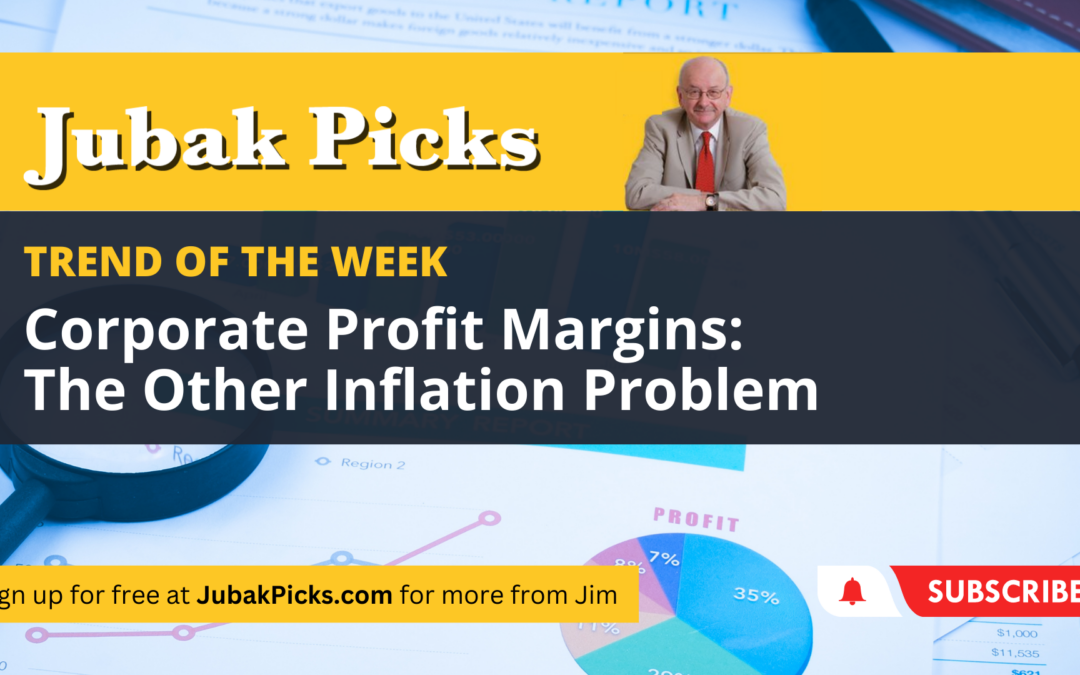
November 28, 2023 | Daily JAM |
The pace of improvement in the U.S. inflation rate is set to slow in the coming year. According to the economists surveyed by Bloomberg in its latest monthly outing, the core personal consumption expenditures (PCE) price index-—-the Federal Reserve’s preferred measure of inflation–will still be running at a 2.5% pace at the end of 2024. That’s up slightly from the 2.4% prediction in last month’s Bloomberg poll. Importantly it’s still significantly higher than the Fed’s 2% target inflation rate.

October 21, 2023 | Daily JAM, Mid Term |
The U. S. economy, economists project, grew at the fastest rate in nearly two years in the third quarter. The actual figures from the Bureau of Economic Analysis get released before the market opens on Thursday, October 26. Gross domestic product grew at a 4.3% annualized pace in the quarter, according to the median projection in a Bloomberg survey of economists.

October 12, 2023 | Daily JAM, Morning Briefing |
Today’s Consumer Price Index report on inflation had just enough bad news on inflation to keep one more interest rate increases from the Federal Reserve on the table for 2023. The all items CPI inflation rate rose 0.4% in September from August. That was slightly above the 0.3% monthly rate that economists had expected. The core rate, which excludes more volatile food and fuel prices, rose by 0.3% in the month, as expected by economists. The bad news in the core number is that the month to month rate of increase at 0.3% recently isn’t low enough to bring inflation down to the Fed’s 2% target.

September 29, 2023 | Daily JAM, Morning Briefing |
The Federal Reserve’s preferred measure of inflation, the Personal Consumption Expenditures index (PCE) rose at the slowest monthly pace inAugust since late 2020. The core personal consumption expenditures price index, which strips out food and energy prices, climbed just 0.1% month to month in August, according to the Bureau of Economic Analysis today, Friday, September 29. The so-called super core inflation index for services, which has been on the Fed’s watch list lately, also posted the smallest monthly advance since 2020. The super core rate also strips out housing costs. That rate climbed by just 0.1% in August.

September 28, 2023 | Daily JAM, Mid Term, Morning Briefing |
Mortgage rates surged to a 23-year high this week. The rate on the average 30-year fixed mortgage increased to 7.31% from 7.19% the week prior, according to Freddie Mac. That’s the highest rate since mid-December 2000, when it averaged 7.42%.

September 23, 2023 | Daily JAM, Short Term |
Expect dueling news watches this week. Garnering most of the pixels will be the countdown to a government shutdown if Congress doesn’t pass a stopgap continuing resolution to keep funding the federal government by September 30. Odds are good right now that the House of Representatives won’t meet the deadline and the many government departments will shut down next week. And on Friday, investors get the next release of the Federal Reserve’s favorite inflation series, the Personal Consumption Expenditures index.

September 20, 2023 | Daily JAM, Morning Briefing |
At today’s meeting the Federal Reserve’s Open Market Committee left the central bank’s policy interest rate at 5.25% to 5.50%. In its Dot Plot forecast the Fed signaled one more interest rate hike for 2023. In its forecast the bank said that rates would end 2023 at 5.6%. That’s roughly 25 basis points higher than today. None of this was surprising. The markets were looking for the Fed to stand pat at this meeting. Odds of that according to the CME FedWatch Tool were above 98% heading into the meeting. The market was calling the possibility of one more interest rate incree in 2023 essentially a coin toss. But the Fed did surprise for 2024.

September 19, 2023 | Daily JAM, Mid Term, Special Reports |
In this Special Report I’m going to start by sorting out the data that the market’s moves will likely depend on for the rest of 2023. That’s today’s post, Part 1 of this Special Report. Then I’ll try to handicap the likelihood that the data will zig or zag. And give you a sense of how far away from the current consensus the actual result might fall. And then finally, I’ll give you 10 moves for the rest of 2023 that are the most likely, in my opinion, to result in profits and that won’t wind up costing you big if the data winds up throwing investors a curve.

September 16, 2023 | Daily JAM, Short Term |
Watch what the Federal Reserve says on Wednesday not what it does at the interest-rate setting meeting of the Open Market Committee. Everybody, I mean everybody, expects that the Fed will hold its benchmark interest rate steady at the current range of 5.25% to 5.50%. The odds, calculated from prices in the Fed Funds Futures market by the CME FedWatch Tool, stand at 98% that the central bank will do nothing. But this meeting also includes an update of the Fed’s Dot Plot forecast for future interest rates, inflation, unemployment and GDP growth. And those numbers will give investors the best available clue on what the Fed will do at its November meeting and int 2024.

September 13, 2023 | Daily JAM, Mid Term, Morning Briefing |
The theory, for today at least, is that the uptick in CPI inflation for August doesn’t change the basis calculus at the Federal Reserve.
August 10, 2023 | Daily JAM, Morning Briefing |
CPI headline, all-items inflation rose at a 3.2% annual rate in July. That was up from the 3% annual rate in June and the first increase after 12 months of steady declines. But the uptick seems mostly an artifact of higher housing costs, an item that shows a longer-term downward trend in prices. The market read this morning is, therefore, that this is continued good news on inflation and that it cements the likelihood that the Fed will stand pat on interest rates at its September 20 meeting. The CME FedWatch tool put the odds of no increase from the Fed on September 20 at 90.5% today. That’s up from odds of 86% yesterday, August 9. But if the question of what the Fed will do in September is settled (in the market’s mind at least), the issue of what the Fed will do (or say) about the future direction of interest rates remains uncertain.

July 31, 2023 | Daily JAM, Videos |
Today’s Trend of the Week: Corporate Profit Margins–The Other Inflation Problem. The market is currently unsure if the Fed will continue to raise rates in September and December. Complicating the Fed’s job of bringing inflation: The trend in corporate profits. Profit margins are projected at 11.1% for the second quarter, down from 11.5% in the first quarter and down from 12.2% in this quarter a year ago. The five year average is 11.4%. Six straight quarters of declining profit margins have companies looking for more ways to bring the margins back up. Any company that still has pricing power is likely to be raising prices. As an example, Spotify raised its U.S. subscription price to $10.99 a month from $9.99 a month- a reasonable, one-dollar increase that will defend the company’s profit margin. The Fed, of course, doesn’t want companies raise prices as the central bank tries to stem inflation by raising interest rates. However for the time being, companies are doing whatever they can to increase profit margins and that includes raising prices on things like toothpaste, if they can, much to the Fed’s chagrin.










